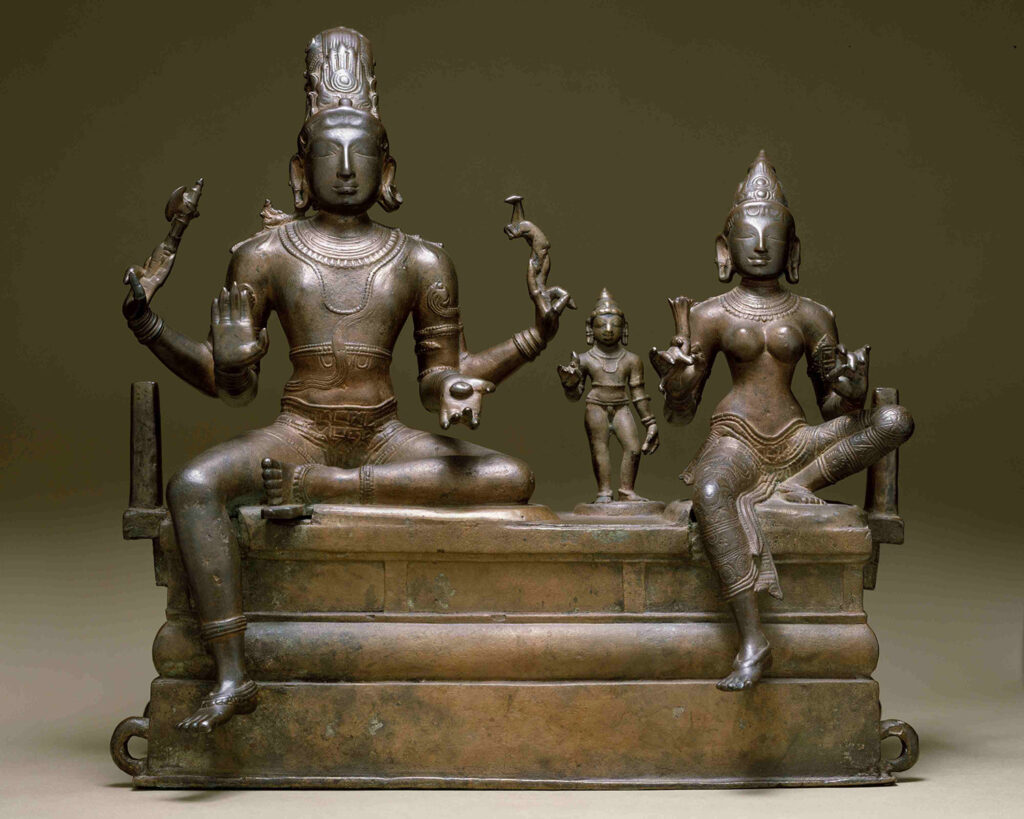
When Europeans first arrived in India, they often dismissed us as “monster-worshipping” people, showing a profound ignorance of the rich philosophy, dharma, and iconography our traditions embody. The so-called “progressive English education system,” championed by Lord Macaulay, further eroded our connection to our millennia-old culture.
Many Indians began to feel a misguided sense of gratitude in distancing themselves from their heritage. Consequently, we have become strangers to our own roots, culture, and traditions, losing touch with the vast philosophical knowledge that has sustained us for thousands of years. Today, we barely know our deities, let alone the significance of the symbols they hold.
Take, for instance, Lord Shiva. Commonly depicted with a trident, a drum, and a snake around his neck, there are also unique representations, especially in the south, where he holds a deer. This is the story of that deer.
Lord Shiva and Vedas

In early vedic texts, Mahadev comes as Rudra. He was not associated with the Lingam as we pray today. In fact, one of the verse says, “please keep the Phallus worshipers away from us”. But their association with Shiv-Lingam is not mentioned in the Vedas. Later on, Rudra became Mahadev, and it was associated with the Shiv-Lingam.
Lord Shiva and Yadnya
In the beginning, Shiv and Yadnyas had a complicated relationship. But as he became one of the trideva’s even the Vedic followers included him in the Yadnya system. In the Sauptikaparva of Mahabharat, Shri Krishna narrates the story how this happened.
ततो देवयुगेऽतीते देवा वै समकल्पयन् । यज्ञं वेदप्रमाणेन विधिवद् यष्टुमीप्सवः॥
कल्पयामासुरथ ते साधनानि हवींषि च । भागार्हा देवताश्चैव यज्ञियं द्रव्यमेव च॥
ता वै रुद्रमजानन्त्यो याथातथ्येन देवताः । नाकल्पयन्त देवस्य स्थाणोर्भागं नराधिप॥
When the Satya Yuga had passed, all the deities decided to conduct a Yadnya according to the Vedic rituals. They properly invited all the gods and made the necessary arrangements. However, the deities were not fully aware of Rudra’s true nature and did not allocate a share of the offerings for him.
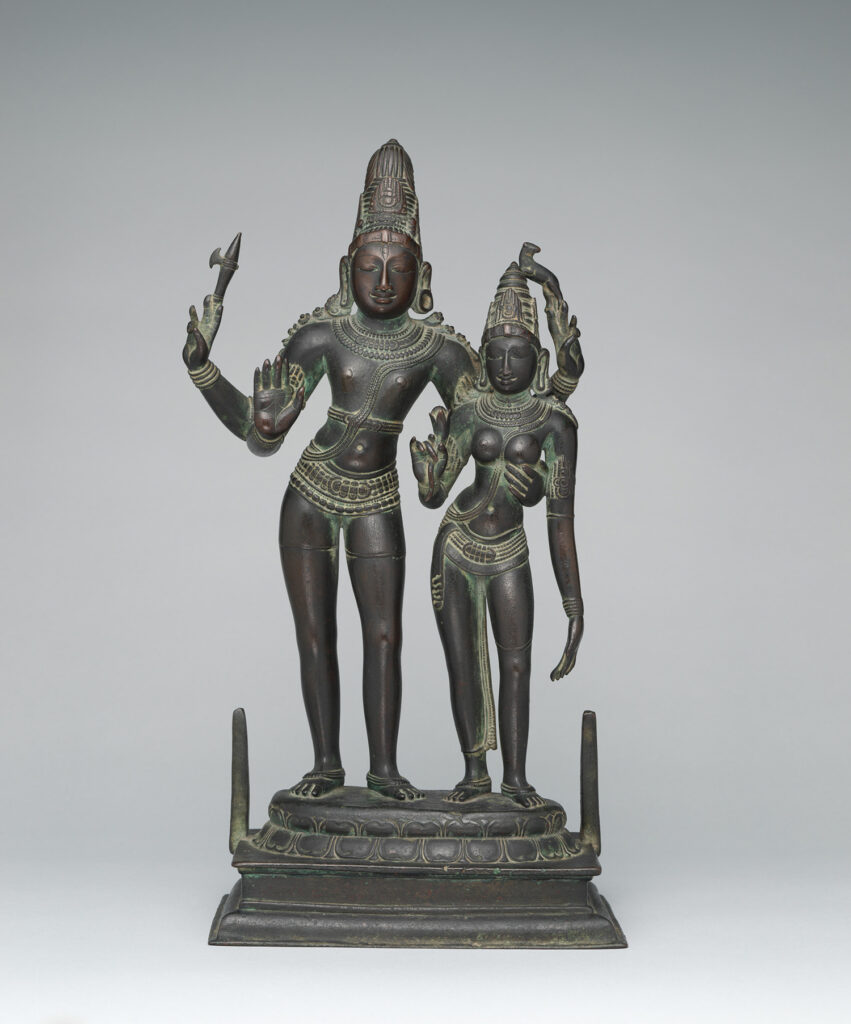
सोऽकल्प्यमाने भागे तु कृत्तिवासा मखेऽमरैः। ततः साधनमन्विच्छन् धनुरादौ ससर्ज ह ॥
लोकयज्ञैर्नृयज्ञैश्च कपर्दी विदधे धनुः । धनुः सृष्टमभूत् तस्य पञ्चकिष्कुप्रमाणतः ॥
वषट्कारोऽभवज्ज्या तु धनुषस्तस्य भारत । यज्ञाङ्गानि च चत्वारि तस्य संनहनेऽभवन् ॥
When the gods neglected to offer Yadnya offerings to Mahadev, the one adorned with tiger skin, he created the universe’s first bow. Lord Shiva, with his matted locks, crafted this mighty bow, which spanned five hand-lengths, using the principles of Loka Yadnya and Manushya Yadnya. Vashatkara formed the bowstring, and the four essentials of Yadnya—purification, charity, Homa, and Japa—became Shiva’s shield.
Upon seeing Mahadev arrive at the Yadnya location with his formidable bow, the earth quaked in fear. The air ceased to flow, and the fire in the Yadnya pit could not ignite despite the large quantities of ghee and Samidha (wood offerings). The constellations shifted, the sun’s radiance dimmed, the moon lost its light, and the sky plunged into darkness. Deprived of Yadnyas, which were their power sources, the deities were gripped with fear.
The constellations began to move from their places, the radiance began to fade away from the Sun, moon lost his light and skies began to immerse in the darkness. Yadnyas were the power sources of the deities. Since the Yadnyas stopped, those deities were shaken with fear.


ततः स यज्ञं विव्याध रौद्रेण हृदि पत्रिणा । अपक्रान्तस्ततो यज्ञो मृगो भूत्वा सपावकः ॥
स तु तेनैव रूपेण दिवं प्राप्य व्यराजत । अन्वीयमानो रुद्रेण युधिष्ठिर नभस्तले ॥
Aiming with a dreadful arrow, Rudra struck the heart of the Yadnya, causing it to transform into a deer that fled with Agni (the fire of the Homa). Ascending to the sky, the deer shone as the Mrigasheera constellation. To this day, Rudra can be seen pursuing the Mrigasheera constellation as Ardra.
त्र्यम्बकः सवितुर्बाहू भगस्य नयने तथा । पूष्णश्च दशनान् क्रुद्धो धनुष्कोट्या व्यशातयत् ।
The furious three-eyed Lord Shiva severed Savita’s arms, blinded Bhaga, and shattered Pushan’s teeth. With mere a bow, Rudra single-handedly subdued all the deities.
A powerful voice, inspired by the deities, severed Shiva’s bowstring, causing the bow to recoil and fall from his hands.
ततो विधनुषं देवा देवश्रेष्ठमुपागमन्। शरणं सह यज्ञेन प्रसादं चाकरोत् प्रभुः ।
भगस्य नयने चैव बाहू च सवितुस्तथा । प्रादात् पूष्णश्च दशनान् पुनर्यज्ञांश्च पाण्डव ।।
ततः सुस्थमिदं सर्वं बभूव पुनरेव हि । सर्वाणि च हवींष्यस्य देवा भागमकल्पयन् ।।
The deities, along with the Yadnya, surrendered to Mahadev, who graciously blessed them. Rudra contained his wrath, restoring Bhaga’s vision, Savita’s arms, and Pushan’s teeth. Order was reinstated, and the deities ensured Mahadev received his rightful share of offerings.
The Symbolism of the Deer in Mahadev’s Iconography
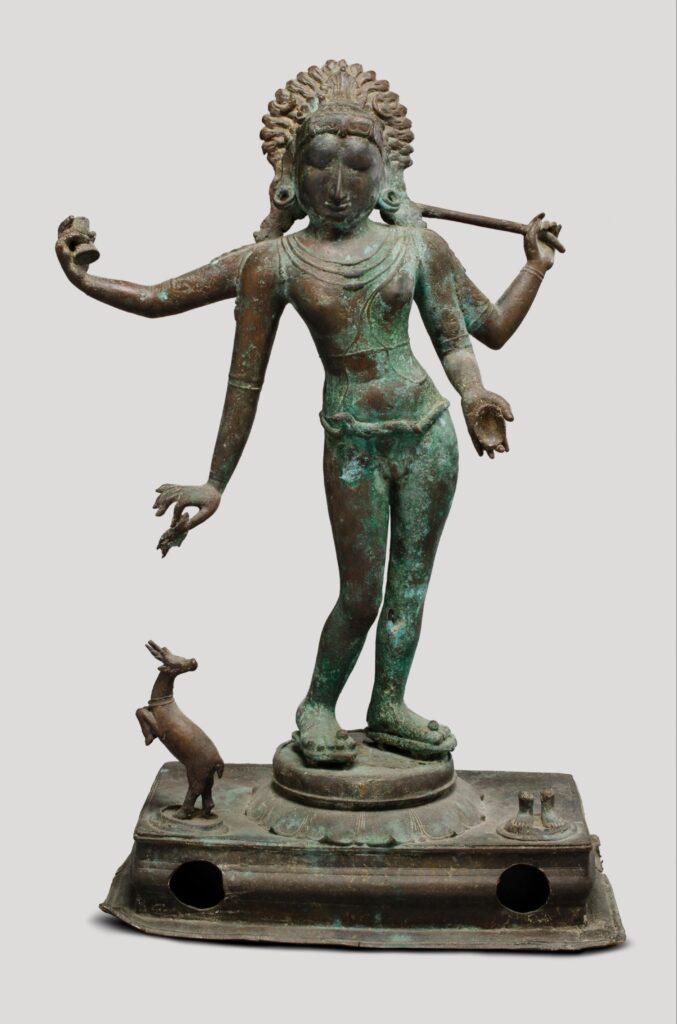
The image of Shiva holding a deer is rich with symbolism that connects him to Vedic knowledge, traditions, and systems. Here’s how the deer symbolizes these aspects:
Symbol of Vedic Knowledge:
Agni and the Mrigasheera Constellation: The deer in Mahadev’s iconography is not merely an artistic choice but carries significant mythological and symbolic weight. The story of the Yadnya deer, which transformed and fled with Agni to the skies, becoming the Mrigasheera constellation, encapsulates Shiva’s protective and transformative powers. His relentless pursuit, as Ardra, symbolizes the cosmic dance of creation and destruction, a testament to his role as the eternal preserver and destroyer.
Pashupati and Control Over Nature: As Pashupati, Shiva is the lord of animals, demonstrating a deep understanding and control over nature. This mastery is in line with Vedic teachings, which emphasize harmony with the natural world and the importance of all living beings.


Symbol of Vedic Traditions:
Yadnya (Sacrificial Rituals):The deer is directly linked to the Yadnya, a central Vedic ritual involving fire sacrifices. These rituals are a core part of Vedic tradition, and Shiva’s involvement with the Yadnya deer shows his deep connection to these ancient practices.
Protector of Rites and Rituals: By holding the deer, Shiva is seen as a protector of Vedic rites and rituals. His role in the story highlights his responsibility to uphold these traditions and ensure their continuity.
Symbol of Vedic Systems:
Cosmic Order and Dharma: The deer represents Shiva’s role in maintaining cosmic order (Rta) and Dharma, both key concepts in Vedic philosophy. His pursuit of the deer symbolizes his efforts to preserve balance in the universe, a central aspect of Vedic systems.
Integration of Vedic and Non-Vedic Elements: The presence of the deer in Shiva’s iconography illustrates the integration of Vedic and non-Vedic elements. This amalgamation shows Shiva’s ability to uphold Vedic systems while embracing diverse spiritual influences, reflecting the adaptability and inclusiveness of Vedic traditions.
Historical and Cultural Continuity:

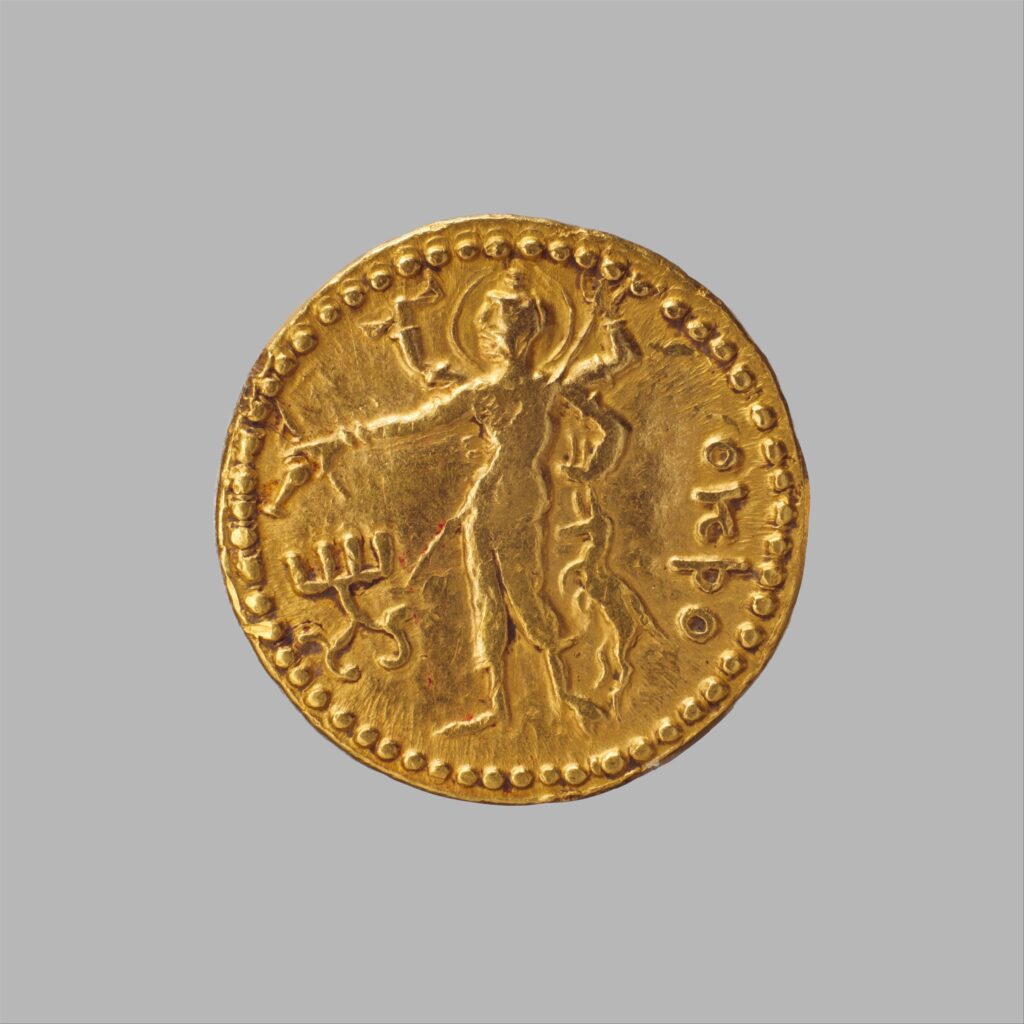
Depiction in Art and Coins: Historical artifacts, like coins from King Kanishka’s reign showing Shiva with a deer, indicate the reverence for Shiva as an upholder of Vedic traditions. The re-emergence of this symbolism in South Indian sculptures centuries later underscores the enduring nature of these beliefs and their continuous evolution.
Preservation of Heritage: By holding the deer, Shiva represents the preservation of Vedic knowledge and traditions across time. This continuity reinforces the cultural and spiritual heritage that forms the bedrock of Hinduism.
In summary, the deer in Shiva’s iconography symbolizes his profound connection to Vedic knowledge, traditions, and systems. It highlights his role as a guardian of ancient wisdom and rituals, his efforts to maintain cosmic balance, and the integration of diverse spiritual elements within the framework of Vedic traditions. This symbolism underscores the depth and resilience of Hindu spirituality, rooted in Vedic heritage while evolving over centuries.


Reference:
- SauptikParva, Mahabharat, Geeta Press Gorakhpur, UP, India
- Metropolitan Museum of Arts, USA
- British Museum, UK.

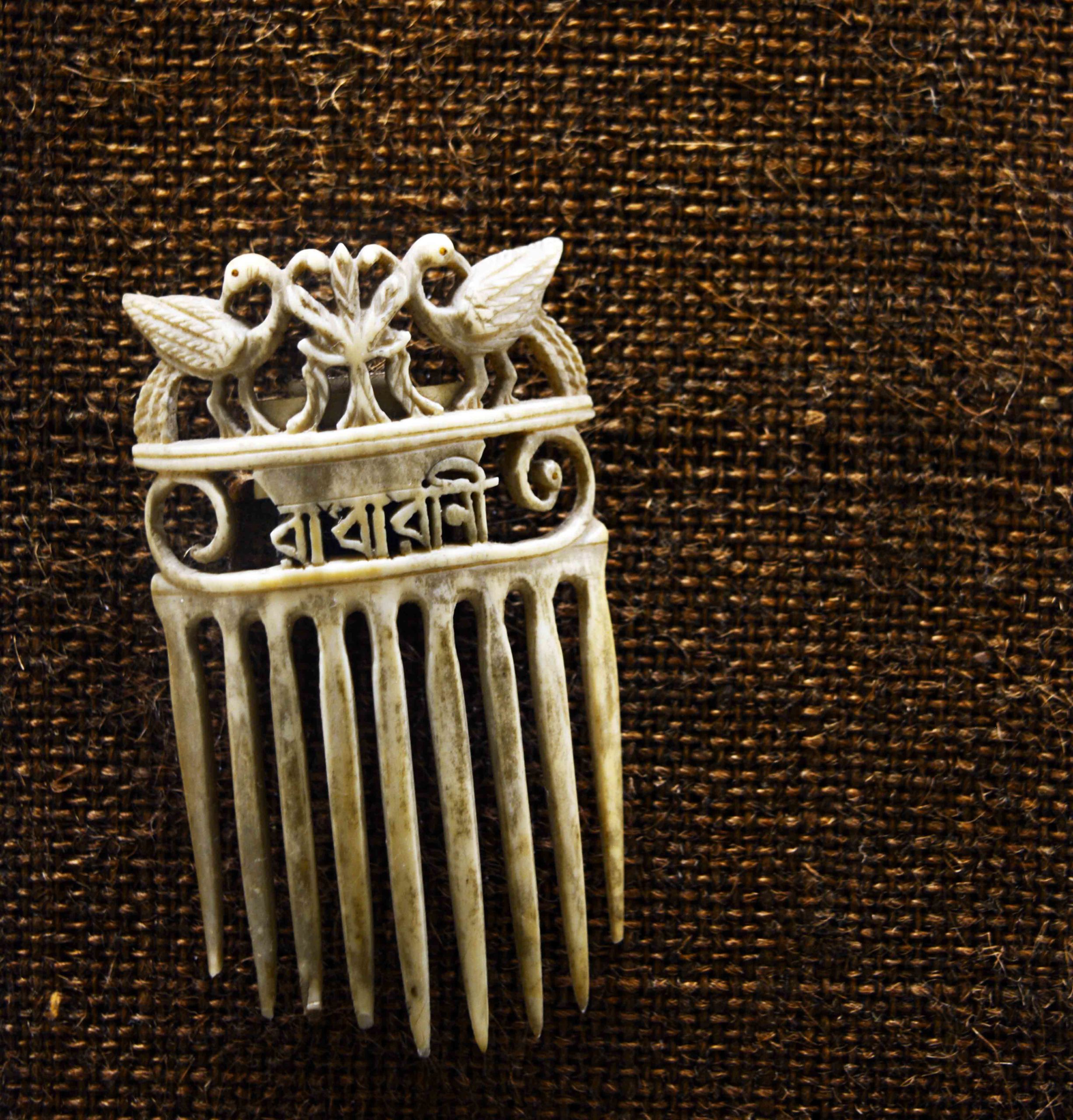

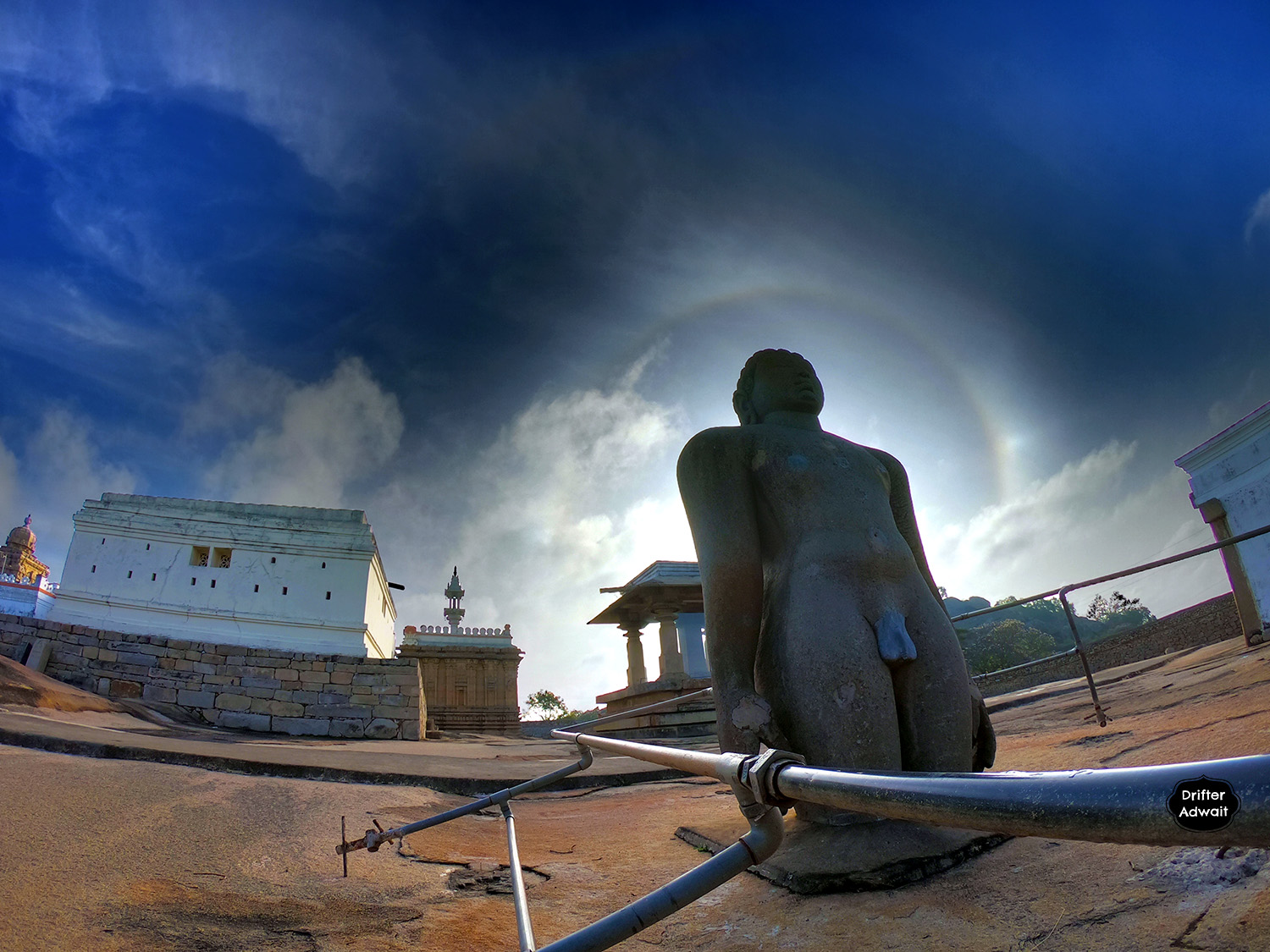
अद्वित
तू आतापर्यंत पाठवले ले आणि मला तूझ्या बाबांनी पाठवलेले सर्व वाचले आहे.आम्हाला तू आम्हास माहित नसलेल्या अतिपूर्वीची हिंदू श्रीमंत परंपरा आणि culture याची माहिती देतोस हें खरंच भाग्यचे आहे.
बापलेक दोघे Great आहात. खूप छान
धन्यवाद सर. लेख वाचल्याबद्दल तुमचे खूप खूप धन्यवाद. आपल्या सर्वांचा हा मूल्यवान ठेवा आहे, आणि आपण त्याची जपणूक करायलाच हवी.